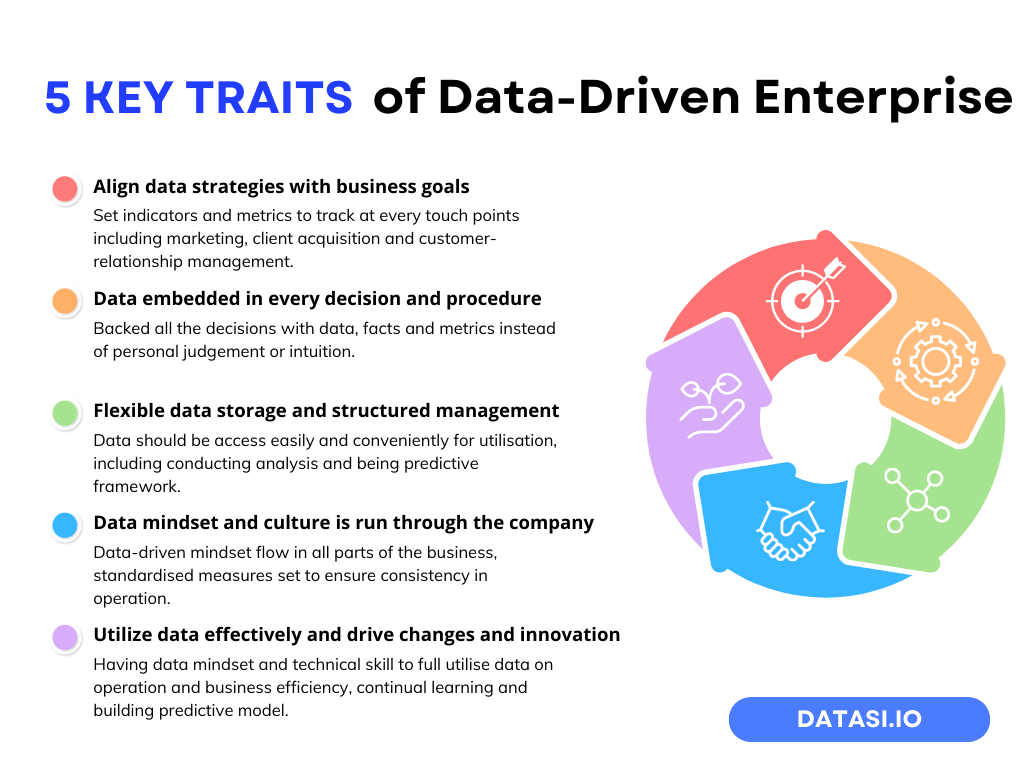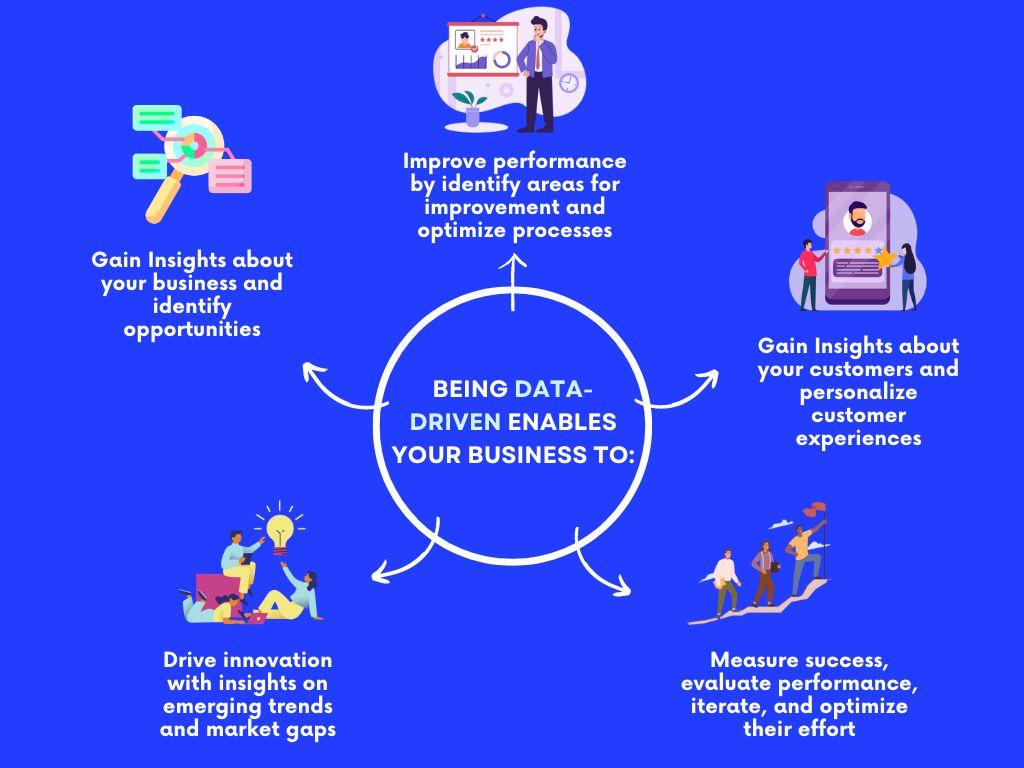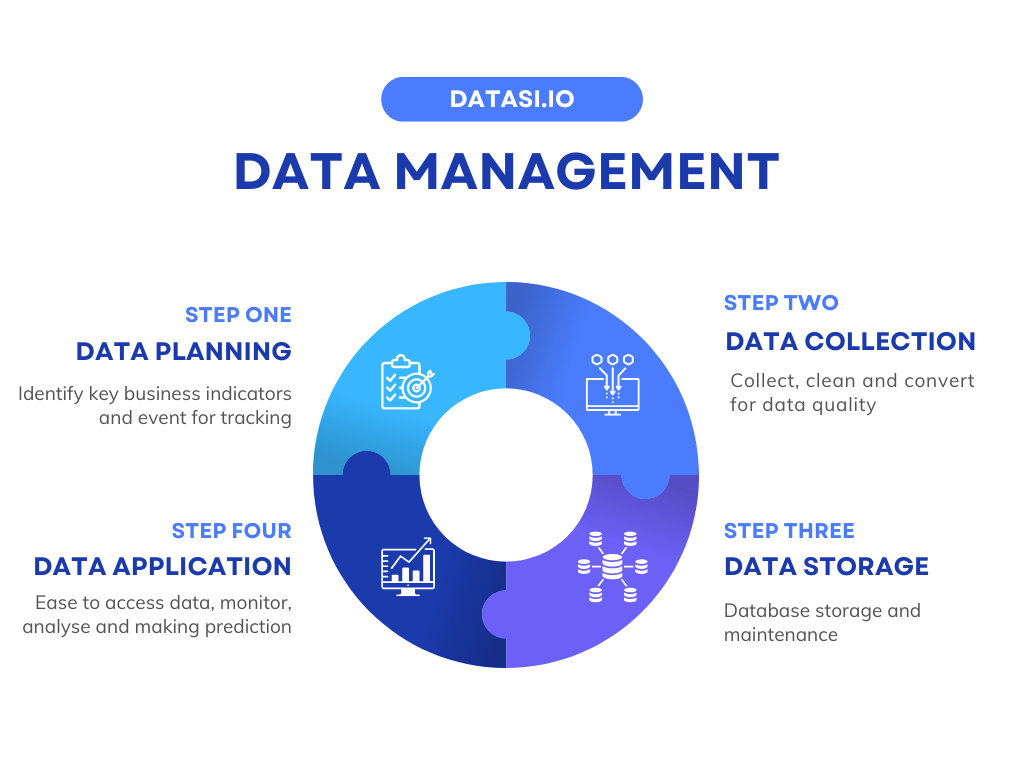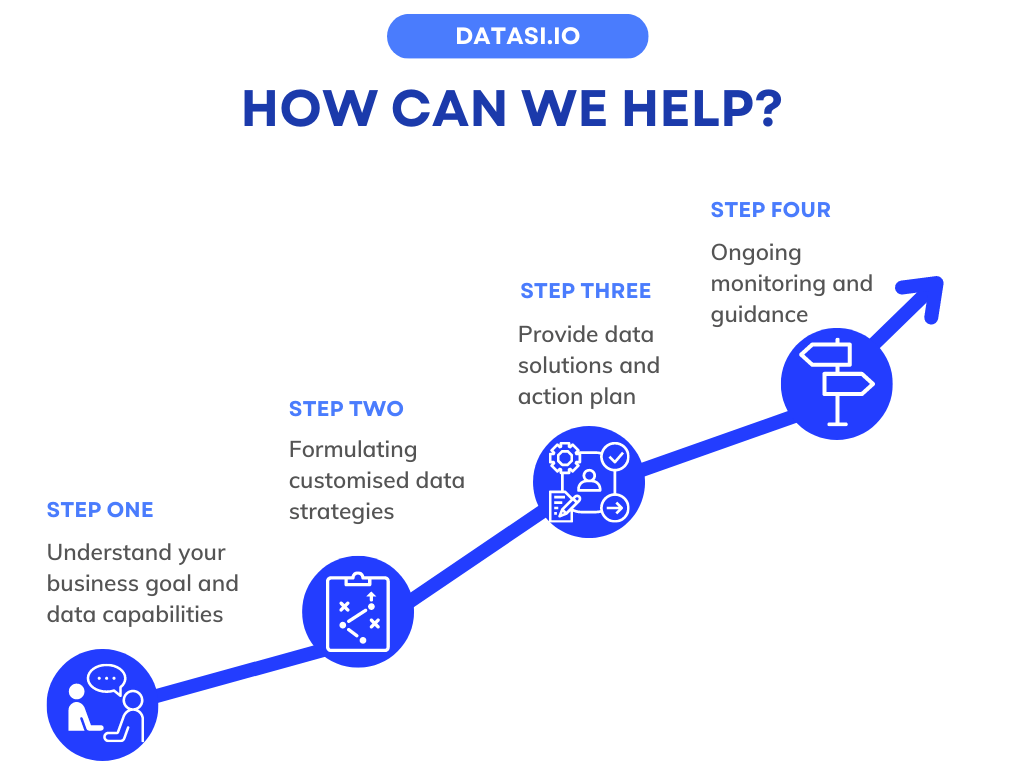Is your business truly data-driven? Have you harnessed the strategic value of your company’s data?
In fact, do you really understand what does it mean to be data-driven?
If you are stumbling on your answer, no worries. A report from Sigma revealed that approximately 40% of business domain experts do not fully comprehend what it means to be data-driven.
That’s why we are here today to write this post. Let’s break down all about being data-driven, from its definition to examples of data driven companies, and why you might not be a data-driven company just yet.
What Does It Mean to Be Data-Driven?
To put it simply, being data-driven involves incorporating data analysis and insights into your decision-making process rather than relying solely on personal judgment or intuition.
It involves using data as a core component of decision-making processes across various aspects of a business, from strategic planning and resource allocation to customer experience optimization and operational efficiency improvements.

In a data-driven approach, organizations collect, process, and analyze relevant data from various sources to uncover patterns, trends, and correlations that can guide decision-making. This data-driven decision-making process allows businesses to make informed choices and take actions backed by empirical evidence, reducing the reliance on assumptions or subjective opinions.
Benefits of Being Data-Driven
According to McKinsey reports, data-driven organizations are 19 times more likely to achieve and maintain profitability. Moreover, companies that possess insights into their customers are 23 times more likely to acquire new clients and retain existing ones.
Being data-driven enables your business to:

Examples of Data-Driven Companies
Many businesses we are familiar with in everyday life are data-driven companies. These companies effectively utilize data analytics to drive their business strategies and operations, leveraging data to gain insights, improve decision-making, and deliver personalized experiences to customers.
For example, Netflix is a company that heavily depends on data for decision-making. It leverages data to personalize content recommendations for its users.

By analyzing user behavior, viewing patterns, and preferences, Netflix suggests relevant movies and TV shows to keep users engaged and satisfied. Data also plays a crucial role in content production decisions, helping Netflix identify popular genres and themes.
Most e-commerce platforms also adopt heavy data-driven approaches in their decision-making. Take Amazon, for instance.
Amazon is renowned for its data-driven approach. It uses customer data to personalize recommendations, optimize pricing, and enhance the overall shopping experience. Its algorithms analyze vast amounts of data to predict customer behavior, manage inventory, and drive targeted marketing campaigns.
Is a Data-Driven Approach Applicable to Traditional Companies as Well?
Of course, even traditional companies like Procter & Gamble (P&G), an American multinational consumer goods corporation, utilize data-driven insights to inform product development, marketing, and supply chain decisions.
P&G analyzes consumer behavior, market trends, and social media data to identify new product opportunities, target specific customer segments, and optimize inventory management.
You may now ask, all of these are renowned big companies. They have all the resources and capabilities to build a structured data strategy and make data-driven decisions. How about small companies?
The answer is the same. Absolutely!
Small businesses can also make data-driven decisions, although their approach might differ from larger companies due to resource constraints. Here’s an example:
Let’s say you are running a small business, a coffee shop. You want to optimize your menu offerings to increase customer satisfaction and sales.
How can you go about it with a data-driven approach?

First, define your key business goals. Let’s say your goal is to increase customer satisfaction, improve menu profitability, and identify popular items.
Then, start collecting and analyzing customer data from various sources, such as point-of-sale systems, loyalty programs, and customer surveys. This data will track customer preferences, purchasing patterns, feedback, and demographic information.
By analyzing the collected data, you may start to identify patterns and trends. You might discover that a particular menu item is frequently ordered, while another item has low sales despite being heavily promoted.

The next step would be to conduct A/B testing. Perform small-scale experiments to test changes to the menu. For example, introduce a new specialty drink and track sales data to compare its performance against existing offerings. This helps determine which changes resonate best with customers.
After that, monitor customer feedback that is collected through surveys, reviews, and social media and gain further insights into customer preferences and identify areas for improvement.
Based on the data analysis, you can now make data-driven decisions to optimize its menu by removing underperforming items, introducing new ones based on customer preferences, and adjusting pricing based on profitability analysis.
Being data-driven means not stopping here, but regularly monitoring sales data, customer feedback, and market trends to assess the impact of menu changes.
In this simple example, the coffee shop leverages data from various sources to make informed decisions about its menu offerings. By collecting and analyzing customer data, monitoring feedback, and experimenting with changes, the menu is better optimized to align with customer preferences and drive sales.
While small businesses may not have the same resources as larger companies, they can still benefit from a data-driven approach on a smaller scale!
So, are you convinced now that you can also turn your business into a data-driven one?
Before that, let’s explore the factors that could prevent your business from being data-driven.
5 Factors that Stop Your Business from Being Data-Driven
1. Lack of Awareness of the Importance of Data

Becoming data-driven requires a mindset that permeates the company’s business culture. The enterprise’s leaders play a vital role in leading their teams to embrace data and establish good data practices.
However, many decision-makers fail to grasp the significance of data management and utilization, resulting in a fragmented data workflow.
Data may be produced across different aspects of the value chain and various departments. However, these data often lack standardization and are disorganized, making it impossible for the company to derive meaningful insights by piecing them together to form a complete picture.
As a business leader, it is crucial to lead by example and foster a culture that recognizes the importance of data and embraces good data practices.
By setting the tone and creating awareness about the value of data-driven decision-making, you can inspire your team to prioritize data and incorporate it into their day-to-day activities.
2. Unstructured Data Management System
Data management encompasses the planning, collection, organization, protection, and storage of an organization’s data for business utilization. Without a well-structured data management system, it becomes difficult and inefficient for employees to extract insights from the data.

Moreover, improper tracking and storage of data increase the likelihood of errors during data analysis. Using incorrect data can lead to significant profit losses and decreased productivity for the company. It is estimated that companies lose around $3.1 trillion each year due to poor data analytics.
3. Underutilization of Data
Inefficient data management practices often result in missed opportunities. To derive accurate insights, data needs to be accurate, real-time, and consistent.
Unfortunately, data scientists often spend a significant amount of time, sometimes over 80%, cleaning and organizing data into a structured format that can be interpreted. Additionally, working with outdated data is a common struggle, with nearly 86% of data experts facing this challenge.
This inefficiency significantly hampers the utilization of data to derive valuable insights. The time spent on data preparation could be better utilized for generating ideas and developing strategies. Ultimately, this inefficiency can lead to potential losses for the company.
4. Insufficient Data Capabilities
Even when companies have collected a sufficient amount of data according to proper standards, they often struggle to extract meaningful insights from it. This is primarily due to a lack of necessary data infrastructure such as outdated technology systems, limited data storage capacity, or insufficient resources allocated to data management. Without a robust data infrastructure, businesses struggle to leverage their data effectively.
At the same time, data-driven decision-making requires employees with the necessary skills and expertise to analyze and interpret data effectively. However, businesses may lack individuals with data science, analytics, and visualization skills. This talent gap limits their ability to harness the full potential of their data. According to Sigma Computing, approximately 63% of employees report that they are unable to obtain timely insights from their data solutions.
Small and medium-sized businesses, in particular, may face budget constraints that limit their ability to invest in data infrastructure and hire specialized personnel. A Capgemini report indicates that the lack of an IT budget is a significant reason why organizations fail to invest in big data.
5. Complexity of Implementing a Data-Driven Operation
Incorporating a data-driven workflow can be challenging, particularly for businesses that have been operating without one for an extended period.
It requires key decision-makers and all departments to come together and gradually restructure the business operations. Effective data investment should deliver immediate value while also laying the foundation for future developments, which can be a complex task for companies starting to embrace a data-driven approach.
We understand the challenges associated with these transitions and are here to assist.
At DataSI, we specialize in helping businesses establish data-driven strategies with minimal effort. By partnering with us, you can enjoy the benefits of making data-driven decisions without the need to form an in-house data team or completely overhaul your existing workflow.
Our data experts will collaborate with you to understand your business goals and guide you in formulating data strategies. We offer expertise and capabilities to optimize your data utilization and foster a data-driven culture within your organization.

Book a call with us today and be a step closer to data success.

Talk to us today
Find out how we can help your business to build a successful data strategy.


